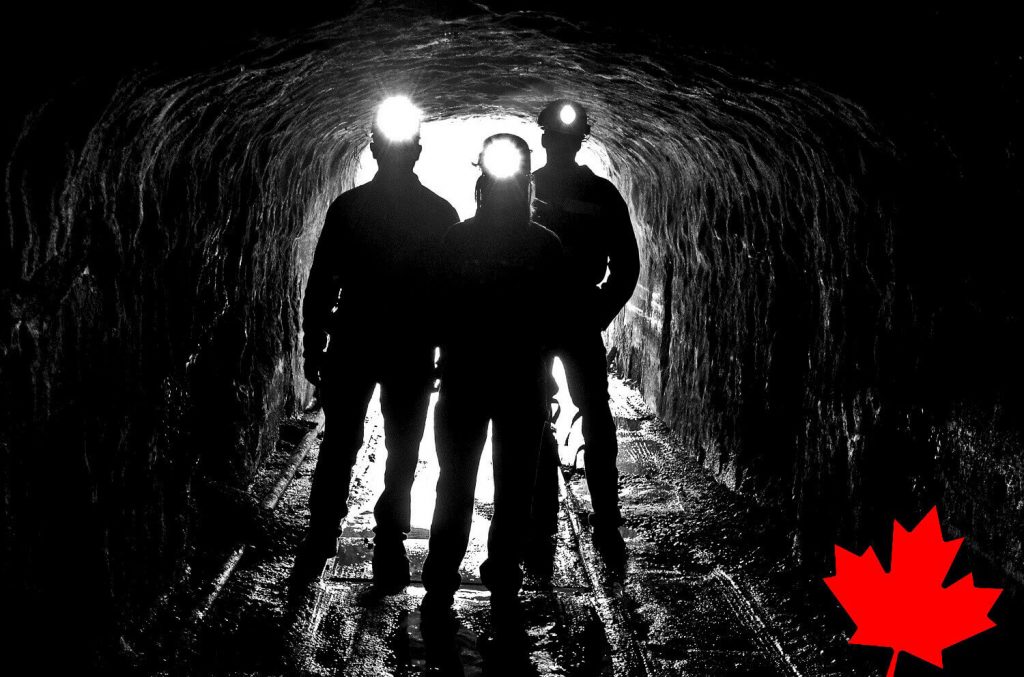Mining: A Very Canadian Story
 September 08 2020
September 08 2020
Canada is a pioneer country in mining industry. Canadian mining history dates back as far as the discovery of North America by Jacques Cartier. At the time, the explorer believed he had discovered diamonds and gold on the flank of Cap Diamant in the region of Quebec. In fact, it was quartz and pyrite, two minerals that were not unusable at that time given that colonization of the New World was still in its first stages. However, the first settlers and Indigenous Canadians of the pre-European era indulged in barter as an embryonic means of trade. Mineral exchanges, such as copper, gold, silver, and Firestone, became commonplace for Indigenous people as their desire for European goods increased. This was the first sign that North American soil was rich in natural resources. The cohabitation of the two peoples led to the discovery of different mineral deposits, thanks to the Indigenous people and their knowledge of their land.
The first mining operations began in the mid-17th century, mainly in Cape Breton and New Brunswick, where sailors and settlers mined small amounts of coal on the shoreline for local trade. The first large-scale industrial exploitation began in New France at Les Forges du Saint-Maurice, Quebec, long before the establishment of Canada. From 1738 to 1883, the first mining activities started due to the discovery of an iron deposit nearby, as the demand in coal and iron was increasing all over the world.

The ore race is now on and the discovery of new mineral deposits contribute to the colonization of the territory and the development of Canada, officially founded in 1867. Mineral exploration was in full swing across the country, even if the transportation means were still rudimentary. Ore is heavy matter and must be transported over great distances; the construction of a railway was necessary. From 1881 to 1886, the Canadian Pacific Railway was built in the Canadian landscape to connect the country coast to coast. Thus, rail transportation eases travellers and raw materials routing to ports, opens the doors to exports and, thereby, promotes the development of the Canadian mining industry.
Meanwhile, the Sudbury nickel mine in Ontario and the Sullivan lead and zinc mine in the Kootenay region became two of the largest mine sites in Canada. Then, in 1903, a large deposit of silver ore that was discovered at Cobalt in Northern Ontario gave rise to the largest silver mine in North America. At the end of the 19th century, Canada experienced the Klondike Gold Rush, which attracted nearly 100,000 mineral prospectors to the Yukon, Northwest Territories and to the Fraser Canyon in British Columbia. Ontario also enjoyed its share of success with gold mining operations located in Timmins and Kirkland.
At the beginning of the 20th century, Canada was already established as a world leader in the mining industry through its production of a wide variety of minerals abounding in the Canadian Shield soil. Common metals such as copper, lead and zinc are now essential to produce consumer goods. Raw materials are also in high demand during World War I and World War II as they are used in military equipment and in supplying factories during the worldwide Industrial Revolution.
After WWII, many technological advances lead the Canadian mining industry as the evolution continues with the discovery of new unexploited minerals: uranium is found in Saskatchewan and Ontario, potash in the Prairies and in New Brunswick. The mining industry is entering in a transition phase when demand for raw ore falters, as it happened with coal for instance. Asbestos, molybdenum, and gypsum stand out in the process industry market and in the construction sector of the modern era. In the 1990s, Canada became a major producer of diamonds and platinum. It also expanded the exploitation of rare earths, estimated at more than 15 million tonnes of rare earth oxides, a new source of essential raw materials needed for the development of greener technologies.
Nowadays, Canada is still a leader with a total of 200 active mines and 6,500 quarries, a major production of some 60 minerals and metals valued at $47.0 billion, according to the latest data published by Natural Resources Canada in 2019.1 In addition to being a major mining producer, Canada is a true global mining finance hub and contributes to the market integrity. The Toronto Stock Exchange (TSX) and the TSX Venture Exchange (TSXV) are home to nearly 50% of the world’s public mining companies. Combined, they list more mining and mineral exploration companies than any other exchange in the world and account for the largest share of global mining equity financing.2
The recognition of Canadian expertise in the mining industry is undoubtedly rooted in its history. Its success is partly due to the wealth of its subsoil; although, the builders of this country are the real achievers behind this great industry that never ceases to evolve and adapt with market demand over time. The innovation, the daring and the skills of an entire nation have contributed to the development of the Canadian intermodal transportation network. Overcoming transportation and logistics challenges is what sets Canada apart in the global mining industry. The fact cannot be concealed: without the railway construction and the expansion of port areas, the successes of Canadian mining industry would certainly not have survived more than 400 years of history!

